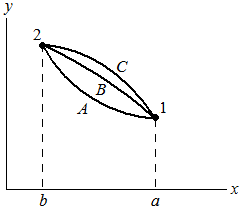A Path function depends on how you get from point A to point B. A State function doesn’t depend on how you get from point A to point B. Think about how many Path functions there are in life and how many State functions there are in life. In an earlier post I mused about how important it is to avoid wasting money on State functions ( http://www.independentpenguin.com/state-functions-and-finance/ ). This post is devoted to the importance of Path functions in our lives.
There are the small Path functions that we have to decide on every day. The cumulative effect of these are a major factor in our life.
If you arrive at an office and have to get to the second floor for a meeting you can take the stairs or the elevator. Either way you will get to the meeting on time. If you take the stairs you will get some exercise and burn some calories compared to taking the elevator. It is less convenient to take the stairs. This is typical of a daily Path function – the better option is less convenient and the better option requires more work. The sum of these choices have a large effect over a lifetime.
There are also large Path functions that influence our lives.
Consider 2 forty year old men. Both have a net worth of exactly a million dollars. Both are university educated. On the face of it, they appear equal. But because of the Path function they took to get to where they are, one is financially independent and one is nearly destitute.
The first man was a trust fund baby. He inherited a large sum from his financier father and scraped through college with a liberal arts education. He has never worked and has been depleting his trust fund since he gained control at 21. Nineteen years later, he has lost 95% of his inheritance. He has current payments for his rental house, second home, gardening and cooking staff, boat, and leased BMW. He will burn through his remaining liquid assets in the next six months and then have to start selling his toys to raise money to live on. This man is spending a great deal of time worrying about the future and his place in the world.
The second man came from a working class family. He worked his way through University and earned a STEM degree. He gained employment after graduating and lived modestly and saved. At this point (at 40) he has enough in investments to cover his expenses using the 4% SWR. He can continue to work (or not), but is not beholden to his job.
The Independent Penguin is an expert at identifying and focusing his energy on Path functions in his life. I will try to do the same. Will you?


